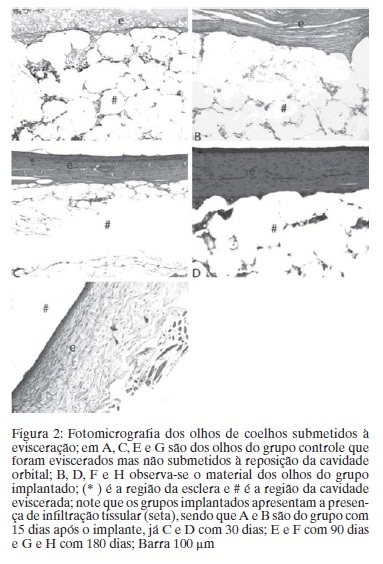OBJECTIVE: Ocular changes in special due to volume loss in eviscerated cavities promote several psychological aesthetic and functional alterations to patients. For this reason, searches aiming at finding a material of low cost and biocompatibility have been constantly carried out. Test experimentally the implants constituted of ultra-high molecular weight granular polyethylene oflow cost, in orbits of rabbits subjected to surgical evisceration in several experimental times, evaluating the macro and microscope aspects besides the systemic toxicity of the material. METHODS: In this study we eviscerated the right ocular globe of rabbits of the species Oryctolaguscuniculus, implanted posteriorly a sphere of granular polyethylene of ultrahigh molecular weight and analysed the effects through macro, micro and biochemical parameters during 15, 30, 90 and 180 days after implantation.The control group were submitted the same procedure without the implants. RESULTS: This paper shows that the material used in the cavity does not present significant alteration in the weight and in the biochemistry of the animal; a good assimilation (integration) of the material implanted by the tissue formed was observed inside the implant. CONCLUSION: The results indicate that ultra-high molecular weight granular polyethylene implant developed by a national industry presents excellent integration in the model used supporting further use in tests with humans.
Anophthalmos; Eye, artificial; Orbital implants; Polyethylenes; Rabbits





